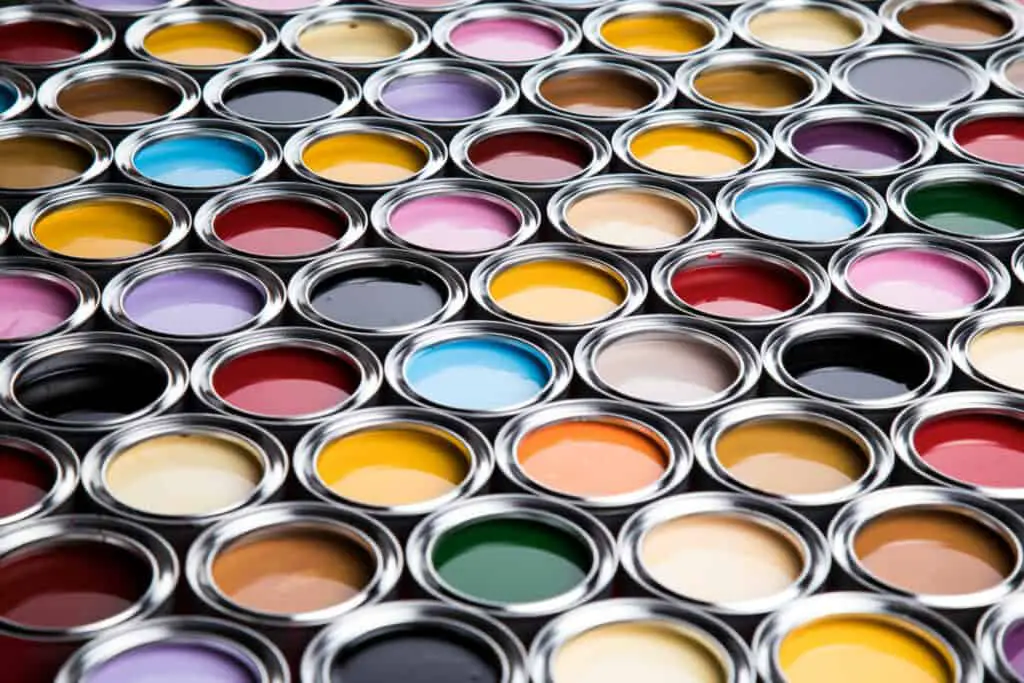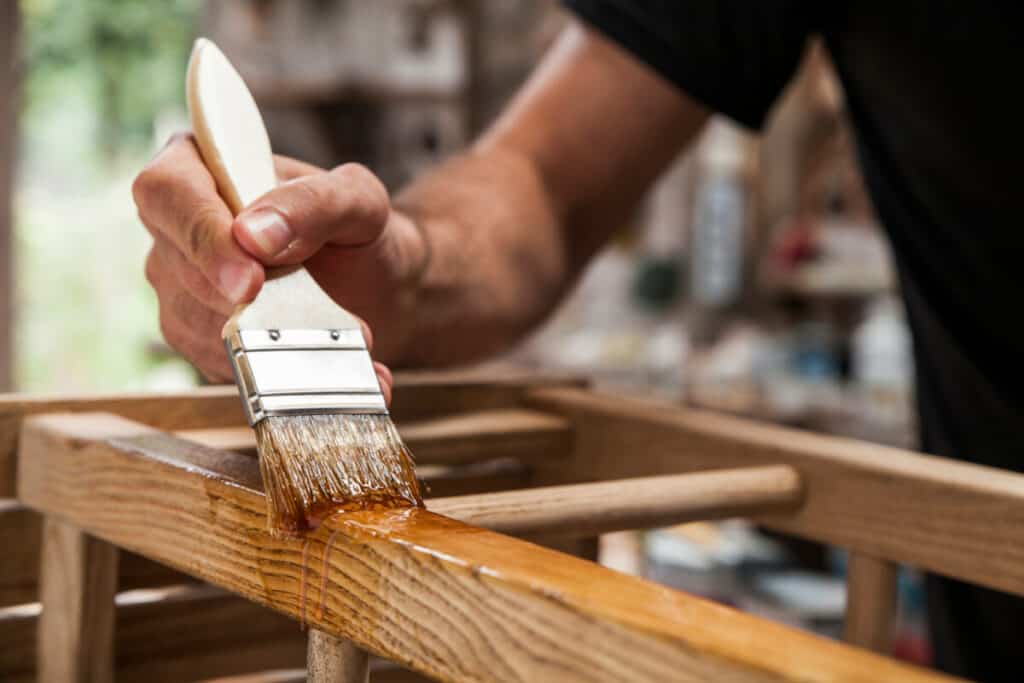
Paint is a form of liquid that people use for a variety of activities. There are the artists who crave hands covered in colorful paint, having a plethora of canvas’ and old paint stored in their studio apartment. There are also renovating homeowners looking to refresh the colors of their walls one last time who have steel cans of leftover paint sitting in their garage that needs to be disposed of.
The proper way to dispose of paint is to throw it away. With house paint, it is common to let it dry out and then toss the paint while recycling the can. With art paints, a similar process is usually done. It is recommended not to pour any paints down the drain, as it can cause plumbing problems.
With this basic guideline on how to dispose of paint, it is important to understand everything about paint! This guide will cover the reasons why you need to be careful in your disposal method, paint types, how you dispose of different kinds of paint, the costs of disposal for different paint types, and other uses for leftover paint.
Why You Need to be Careful When Disposing of Paint
The big reason people need to be careful with how they dispose of paint is that paint can have detrimental effects on the environment, waterways, and on plumbing. Another important aspect to consider is the fact that oftentimes disposal is regulated by laws. It is important to research disposal methods because people don’t want to break the law.
Paint Types
There are many types of paint a person can own. The main forms of paint someone might own are acrylic paints, oil paints, watercolor paints, latex paint, and oil-based house paint. All of these paint types are composed differently, have different purposes, and the quantities someone owns vary.

Acrylic Paint
Acrylic paint is one of the most common types of paint used in the art world. It also was originally used for house paint as well. It is composed of three ingredients: a pigment, a binder, and water. The binder is often a polymer that holds the pigment in place and protects the pigment when the water dries.
Acrylic paint is also a common paint type because it is easy to use, easy to take care of, and dries quickly. (Source) It is easy to use because the composition allows it to be flexible regardless of the environment and friendlier to the user. You will often see acrylic paints in art kits, schools, and most paintings.
Oil Paints (Art)
Oil paint is a paint that has an oil base instead of a polymer that dries when the water evaporates. This paint originated before acrylic and is found in many renowned art pieces including the Mona Lisa, Girl with a Pearl Earring, and the Persistence of Memory. (Source)
This type of paint is unique because the oil base makes the paint dries at a slower pace. This creates more opportunities for the artist to be able to edit and mess with different compositional aspects for a longer period of time. It can create unique textures and color variations. This oil-based paint has to be thinned with paint thinner instead of water. This paint has to be handled differently in use and disposal. (Source)
Watercolor Paints
Watercolor paints are starkly different than acrylic or oil paints. Some of the main differences between the previous paints and watercolor paint are that watercolor has a different composition and artists use different techniques with this medium.
Watercolor paints are made with a simple recipe of binder, pigment, and a few additional materials to make the paint reusable and dry quicker. The paint dissolves in water and dries quickly. The fact the paint reacts strongly to water allows the paint to be easily washed out of paintbrushes. They also are less messy, easier to transport, and are viewed as one of the easiest art forms. (Source)
Latex Paints
Latex paint is similar to acrylic paint in that it has acrylic pigments, yet there are some important differences between the two. Latex paint is made in larger quantities. These larger quantities make it cost-efficient to buy paint for painting walls and other large projects. Latex paint is able to be washed out with water. It used to be made with a latex base but is now made with different bases.
It is a great choice for painting a home because it dries quickly, easy to apply and remove from unwanted surfaces, doesn’t smell as strongly, and needs fewer coats to be effective. (Source)

Oil Based House Paint
This oil paint is similar to the stuff used for art, however, the consistency and amount produced are different. The container you buy will be significantly larger and the paint will be thinner than oil paint used for art purposes. (Source) The oil often used in this paint is linseed oil.
The oil in the paint helps bind the pigment to a surface. Oil-based house paint is known for being durable and taking longer to dry than other house paints. It is highly recommended you paint areas of your home that experience a lot of use with oil-based paint. (Source)
Now that we understand the different paints a person can be handling, now it is vital to discuss the different disposal methods that can be utilized.
Disposal Methods
There are as many ways to dispose of paint as paint types. Each paint type needs a different method of disposal that is recommended.
Acrylic
With acrylic paint, the disposal methods are pretty simple. One of the most important things to consider is whether or not your acrylic paint is toxic or non-toxic. If it is toxic, you should not pour it down the drain. Even if it is non-toxic, pouring it down the drain is not a preferred method of disposal since it is difficult to process in water plants.
The main form of disposal that is recommended is to allow the paint to harden and then throw the paint away. With a smaller amount of acrylic paint, this is pretty feasible to just allow the can, tube, or spot of paint to dry. With larger cans, you might need to add some additional materials like sand to speed up the drying process. Once it is dry, you can throw it out.
With the water that you use for acrylic painting, it is recommended to pour it into a can and allow the water to evaporate. If a person has a large amount of water and needs to dispose of it sooner rather than later, you can pour it down the drain after straining it to get rid of the paint. It is still not recommended to pour it down the sink, but the water will cause less damage once strained. (Source)
Oil (Used primarily for art)
The disposal method for oil paint used in art is intense and multi-step. The most important thing to remember is that you should not put any water/oil down the drain. This paint is much more dangerous than acrylic paints and needs to be handled by hazardous waste experts.
The first thing a person who owns and uses oil paints will want to do is get four containers, three of a smaller size suited to the person and the paint usage and one that is larger to contain waste water. The smaller tubs need to have water in them and one of the smaller containers should also have detergent as well.
To clean the brushes, a person needs to have a bucket of solvent to wash the brush out in. After using the solvent, they would need to wipe off the brush on a rag and then rinse it out with cooking oil. After the cooking oil, the next step is to wash it out in the tub with the detergent/water mix and then again in the other two tubs. The brushes will be clean at this point and need to be allowed to dry. (Source)
Any waste water should be put in the tub designated to be disposed of through proper methods and professionals.

Watercolor
Watercolor paints are the least toxic paint out of the options explored in this article. Most of the time, you can pour the water out in the sink and toss the paint in the trash. The watercolor a person uses can have higher levels of toxicity, so individual research might be needed to assure water safety.
Another option an expert gave for watercolor disposal is that you can water flowers with left-over water. It is said that the minerals in the paint can lead to flowers thriving! On the other hand, you should not water anything that creates food with watercolor paint. Although watercolor typically does not have a lot of toxicity, it usually still has some toxic elements to it that can contaminate the fruits or veggies being produced. (Source)
Latex Based Paints
Latex-based paints can be considered hazardous waste, so some trash companies will not mess with disposing of this kind of paint. It is highly recommended you call your waste removal company and inquire about whether or not they will take latex-based paint. If it is found that they are able to dispose of paint, then there are a few additional steps that need to be taken.
The first task that needs to be taken is to remove the paint from the can and put it into a cardboard box or a trash bag. After you relocate the paint into the new container you will need to put other items into it to make it harden faster. There are two main options of items you can put to speed the hardening process: paint hardener or absorbing items like newspaper, sand, cat litter, etc. (Source) A paint hardener is nice because it is a faster process and can take on large amounts of paint easier than sand or litter. (Source)
After the paint has hardened in the container, then you can toss it in the trash like normal. It is a pretty painless process and is not foreseen to add additional costs. (Source)
Oil (used primarily for home painting)
Oil paint used for painting is similar to oil paints used for art. Oil paint cannot be tossed in the trash, it is required that it is thrown out using proper techniques. Some of the possible ways you can throw out oil paint are by finding a hazardous waste disposal location or company that can pick up your paint. (Source)

Costs of Disposal
The cost of disposal can fluctuate based on the location, amount of paint, and the company you are getting the service from. On average, for removing smaller amounts of paint and paint-related products, the cost is around 80 dollars. (Source)
Other Uses of Leftover Paint
There are more options for leftover paint than just disposal. Some of the options include donating, recycling, and saving it. (Source).
There are often many different organizations that can benefit from leftover house paints such as communities, charities, churches, local theatre groups, high schools, or Habitat for Humanity ReStore. (Source) Each of these different locations uses an abundance of paints for different projects.
In a high school theatre troupe, I was a part of we had strict budgets for producing sets. We were incredibly lucky to have different tools like a wood saw to be able to create our own buildings and set pieces. However, often our closets were full of leftover paint from previous productions. Often, the crew improvised and found ways to utilize paints from previous shows. Yet, the troupe could have benefited from having donated paints on top of utilizing and finding creative ways to include bright pink in unrelated new shows.
With this general guide on how to dispose of and use all types of paint, a person can make the best decisions for disposing of paint and might find new ways to use the paint they have, whatever the paint journey!
Related Topics:
If you like the article above, here are some other similar articles you should check out!
How to Dispose of a Helium Tank
